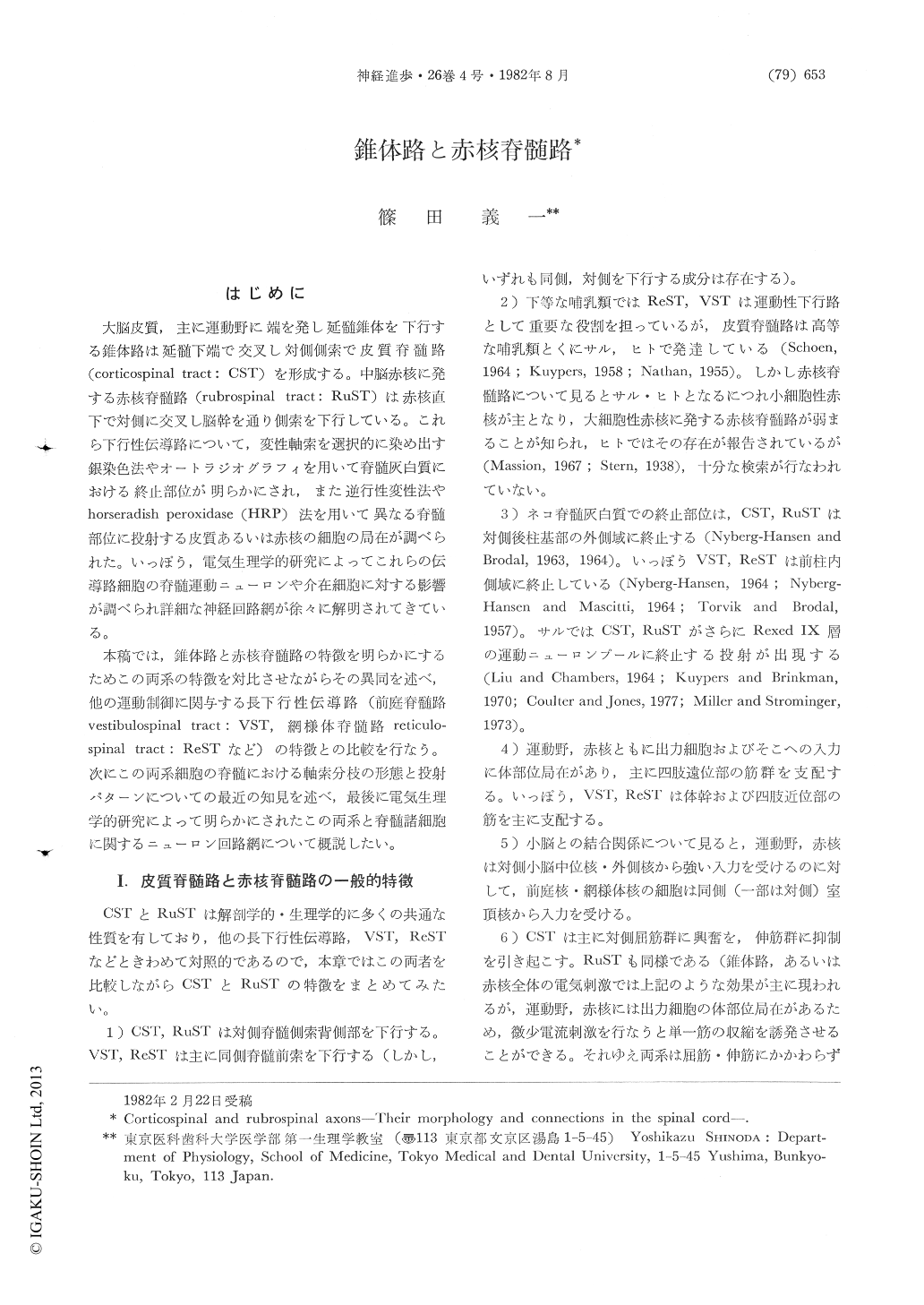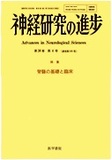Japanese
English
- 有料閲覧
- Abstract 文献概要
- 1ページ目 Look Inside
はじめに
大脳皮質,主に運動野に端を発し延髄錐体を下行する錐体路は延髄下端で交叉し対側側索で皮質脊髄路(corticospinal tract:CST)を形成する。中脳赤核に発する赤核脊髄路(rubrospinal tract:RuST)は赤核直下で対側に交叉し脳幹を通り側索を下行している。これら下行性伝導路について,変性軸索を選択的に染め出す銀染色法やオートラジオグラフィを用いて脊髄灰白質における終止部位が明らかにされ,また逆行性変性法やhorseradish peroxidase(HRP)法を用いて異なる脊髄部位に投射する皮質あるいは赤核の細胞の局在が調べられた。いっぽう,電気生理学的研究によってこれらの伝導路細胞の脊髄運動ニューロンや介在細胞に対する影響が調べられ詳細な神経回路網が徐々に解明されてきている。
本稿では,錐体路と赤核脊髄路の特徴を明らかにするためこの両系の特徴を対比させながらその異同を述べ,他の運動制御に関与する長下行性伝導路(前庭脊髄路vestibulospinal tract:VST,網様体脊髄路reticulospinal tract:ReSTなど)の特微との比較を行なう。次にこの両系細胞の脊髄における軸索分枝の形態と投射パターンについての最近の知見を述べ,最後に電気生理学的研究によって明らかにされたこの両系と脊髄諸細胞に関するニューロン回路網について概説したい。
Both corticospinal and rubrospinal systems have many common features and these features were discussed in contrast to those in vestibulospinal and reticulospinal systems. Intraaxonal injection of HRP revealed that corticospinal and rubrospinal axons have very similar branching patterns and spread in laminae, V, VI and VII of Rexed. These branches arc distributed in a rostrocaudal direction (about 1.0~5.0 mm) in a delta-like fashion. Individual corticospinal and rubrospinal neurons have multiple axon branches such as those described above and project to widely different segments of the spinal cord.

Copyright © 1982, Igaku-Shoin Ltd. All rights reserved.


